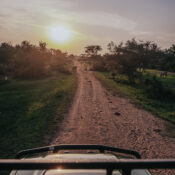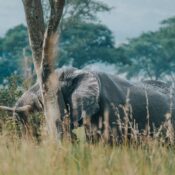Mountains Of The Moon
Mountains Of The Moon
Mountains of the moon, After devastating floods, mountain guides in western Uganda have begun rebuilding the lost trails, carving 22km of new routes through one of Africa’s most beautiful alpine areas.
Even from our 3,000m altitude, the Nyamwamba River in western Uganda cut a stark path through the valleys below. The river meandered and spread as it reached sunbeaten Savannah and merged with Lake Dweru, straddling the equator. Clouds rolled in around us, across giant heather trees draped in bearded moss, and the panorama disappeared. Save for the trill of a plump pair of Rwenzori turacos – flashing scarlet, blue and green against the grey sky – there was silence.
We’re here rebuilding for our survival
From our vantage point, it was difficult to imagine the destruction wrought by the Nyamwamba River six months earlier. The once-modest riverbank now stretches more than 100m wide, layered with reflective boulders carried downstream from Uganda’s UNESCO-inscribed Rwenzori Mountains National Park.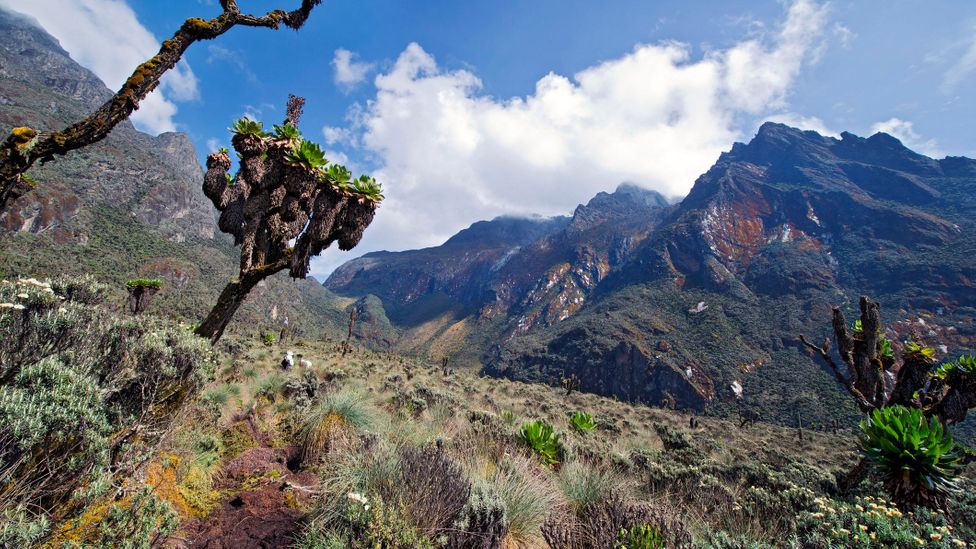
Once thought to be the source of the Nile, Uganda’s Rwenzori Mountains were coined the “Mountains of the Moon” by Ptolemy (Credit: Guenterguni/Getty Images)
On the morning of 10 May 2020, mechanical engineer John Tinka, 69, had just opened up his workshop in the nearby copper mining community of Kilembe when he smelt something strange and earthy. Looking outside, he noticed the river water had turned brown, and upstream a distant roar was growing.
“It sounded like bombs going off. Boom! Boom! Boom!” he remembered. Tinka fled to higher ground with his co-workers as a 10m-high tidal wave of water flattened a path through the valley, carrying clashing rocks in its flow – some the size of a football, others bigger than an elephant.
You may also be interested in:
• Cape Town’s most famous fast food
• The last guardians of a python spirit
• The country ruled by kindness
Heavy rains in the days before had brought landslides that, in a freak event, dammed the river upstream. When the water eventually broke through, it tore across Kilembe: dozens of houses, a school, a medical clinic and several bridges were washed away. Eight people died; thousands more were displaced. But the damage didn’t stop there.
In recent decades, as the copper mines fell into disuse, the local community came to depend on tourism for its livelihood. Around 1,000 people are employed as porters and guides throughout the national park, leading hikers though a series of artfully placed trails and camps that wind all the way up the glacial peaks of Mount Stanley at 5,109m – Africa’s third-highest mountain. Many of these trails, too, were taken by the landslides. Rwenzori Mountains: Africa’s surreal ‘Mountains of the Moon’
“It really was catastrophic,” said John Hun wick, 72, founder of Rwenzori Trekking Services (RTS), which opened a series of trails and camps leading from Kilembe up into the mountains in 2009. “But we had to start doing something.” Mountain guides and porters picked up pangas (a traditional knife similar to a machete) and hoes and began rebuilding the lost trails. Since May, they have carved 22km of new routes, opening up previously inaccessible valleys to hikers.
“The work is hard, but everybody’s getting involved,” said Joy Biira, 26, a mountain guide for RTS. “Clearing the trails is really helping the community, it gives us money which supports our families.”
The weather is usually unpredictable up on the mountains, with brilliant sunsets over distant ridges met by a thunderous barrage of raindrops on the steel roof of our bunkhouse at night. But in recent years, climate change has made it even more volatile. The permanently glaciated peaks – so expansive in the 1950s that it was possible to ski on them – are in retreat too. Once thought to be the source of the Nile, these snow-white caps were coined the “Mountains of the Moon” by the ancient astronomer and geographer Ptolemy, but geologists expect they will disappear altogether within the next decade. Uganda faces significant impacts of climate change, with floods and droughts increasingly common.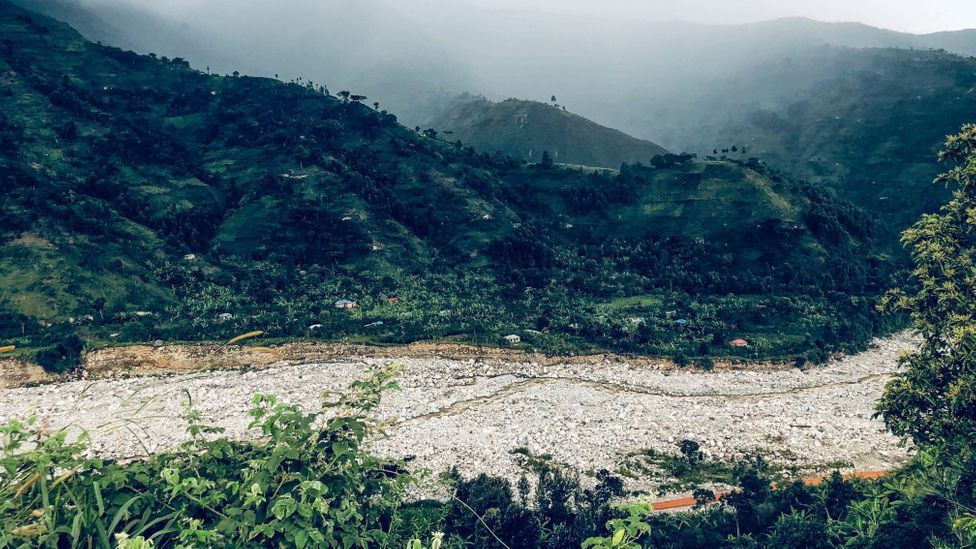
In May 2020, the Nyamwamba River broke its banks as the worst floods in decades crashed through the Rwenzoris (Credit: Bobby Kolade)
The recent landslides came as a double whammy to the trekking industry that was already reeling from the spread of corona virus and the subsequent closure of Uganda’s international airports. Now, as the country opens its borders once again, and with these revitalized trails and camps, Biira is hopeful that tourists will begin to return.
Africa’s botanical big game
The Rwenzori’s snow-capped peaks are the pinnacle of a near 4,000m ascent through a phenomenally diverse wilderness. Setting out from the terraced foothills tended by the Bakonzo people who call the Rwenzori mountains home, we hiked up through tropical hardwood forest and towering bamboos before reaching surreal, boggy Afro-alpine moorlands that were dotted with giant flowering lobelias; aliens in the mist.
“People may have heard about Uganda’s safari parks, but this is Africa’s botanical Big Game,” said Edison Kule, chief guide at RTS. As we ascended, Kule leading the way, co-guide Enock Bwambale stopped frequently to point out medicinal plants: soft pink impatiens flowers that are said to ease delivery during childbirth; and the thick bark of symphonia trees used to treat diarrhoea. “People can live here for a long time without needing to visit the hospital,” he said.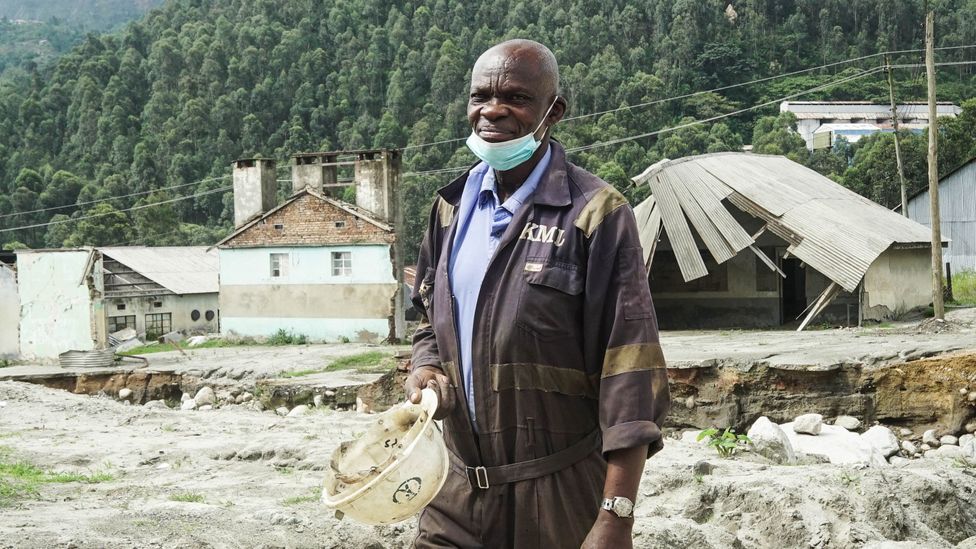
Mechanical engineer John Tinka was forced to flee as a 10m-high tidal wave of water flattened a path through the valley (Credit: Thomas Lewton)
Bwambale first climbed the mountains in 2003 as a porter for the Uganda Wildlife Authority. “It was so attractive,” he remembered. “I found all sorts of plants and trees that I had never seen before. Every time I come here I discover something new – it never gets boring.”
It sounded like bombs going off. Boom! Boom! Boom!
The name Rwenzori stems from rwe nzururu, which means “place of snow” in the Bakonzo language, and the mountains’ remarkable biodiversity owes much to this disappearing glacial landscape. Over millennia, the periodic advance and retreat of glaciers squeezed and then opened up the fertile land available to plants. These cycles of intense competition and opportunity created the conditions for rapid evolution. “When the snow melted, all those valleys and ridges started developing different types of plants and trees,” said Bwambale.
The Rwenzori Mountains National Park is home to dozens of species of plants and animals not found anywhere else in the world, such as the Rwenzori red duiker (a type of antelope) and the rare, dark Rwenzori leopard. Many others – such as forest elephants, chimpanzees and L’Hoest’s monkeys – are severely endangered.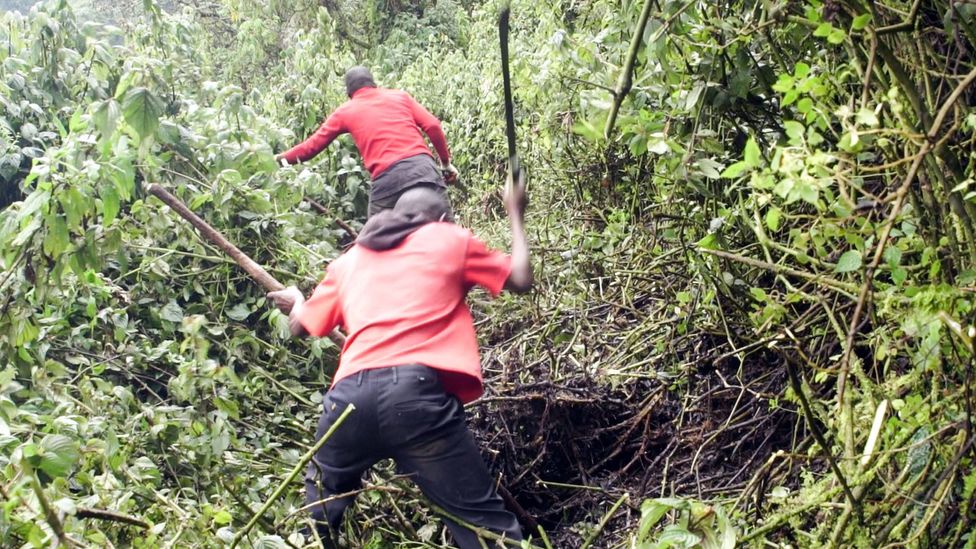
Mountain guides and porters have been cutting new routes through the undergrowth as many trails were destroyed by the landslides (Credit: Thomas Lewton)
For centuries the Bakonzo people have lived in and around the Rwenzori Mountains, farming in the foothills and gathering firewood and hunting animals from the surrounding forest. Taking only what they needed, the Bakonzo co-existed with their environment.
“Kitasamba is the god who sits atop the mountain, it means ‘the great one who does not climb’,” explained Kule. “If you misbehave when you are on this mountain, you will be punished by the gods who are watching over you.” Community leaders still collect offerings and leave them in them in the forest for the god Kalisha, Kitasamba’s son who takes care of the mountain’s wildlife.
But in the late 1970s and ‘80s, civil war forced civilians away from their homes to shelter in the forest. Then, in 1990s, the mountains were occupied by guerrilla fighters from Rwanda and the Democratic Republic of Congo, which borders the national park.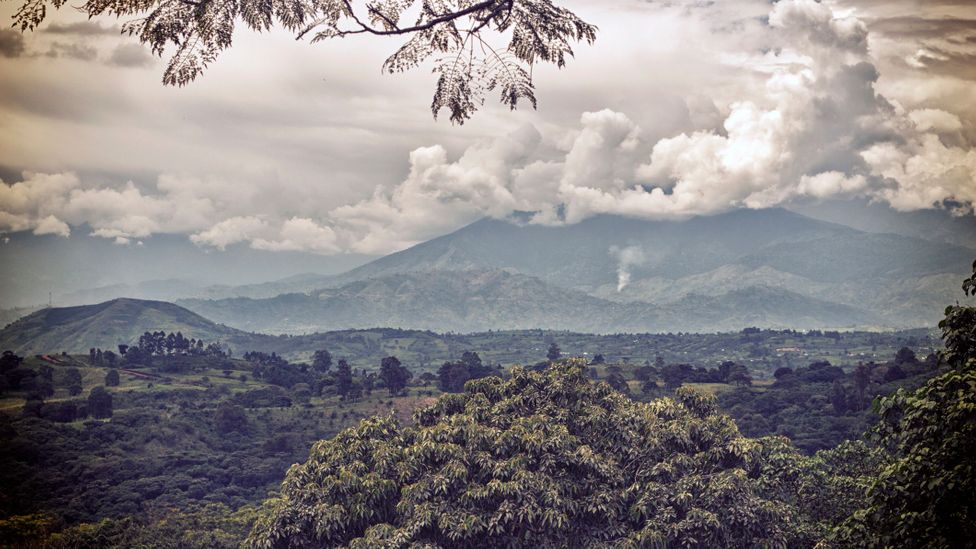
The Rwenzori Mountains National Park has Unesco listing as an area of exceptional natural beauty (Credit: Misugo/Getty)
“The elephants were killed in big numbers, which changed the ecosystem. The elephants used to eat the vines, but now the vines are strangling the young trees and killing them,” said Kule, pointing to a tangled knot in the canopy weighing down its unwilling host.
In place of trees, dense 3m-high bush has now taken hold in some parts of the national park, a challenge to the team of pathfinders creating new trails to replace those recently swept away. “We’ve had to go through very thick vegetation. Sometimes we explore three or four times before we find a good route. Often, it’s on a slope like this,” said Hunwick, pointing along a vertiginous drop. “We’re digging down, it’s an enormous effort.”
In every disaster, an opportunity
Behind Hunwick, the path we’d been following for the last four days abruptly ended and two dozen men and women were slashing the undergrowth to forge a way through. Not only has this new work created employment, but also an atmosphere of optimism: in spite of corona virus, in spite of the landslides, there is hope that the trekking industry will rebound.
“We’re here rebuilding for our survival,” said Pelousi Masika, 32, stepping aside from the churned soil, hoe in hand. Masika’s work as a porter with RTS has largely dried up since May and she’s struggled to support her six children back at home in Kilembe. “Making these new trails will bring people back to the Rwenzori Mountains,” she said.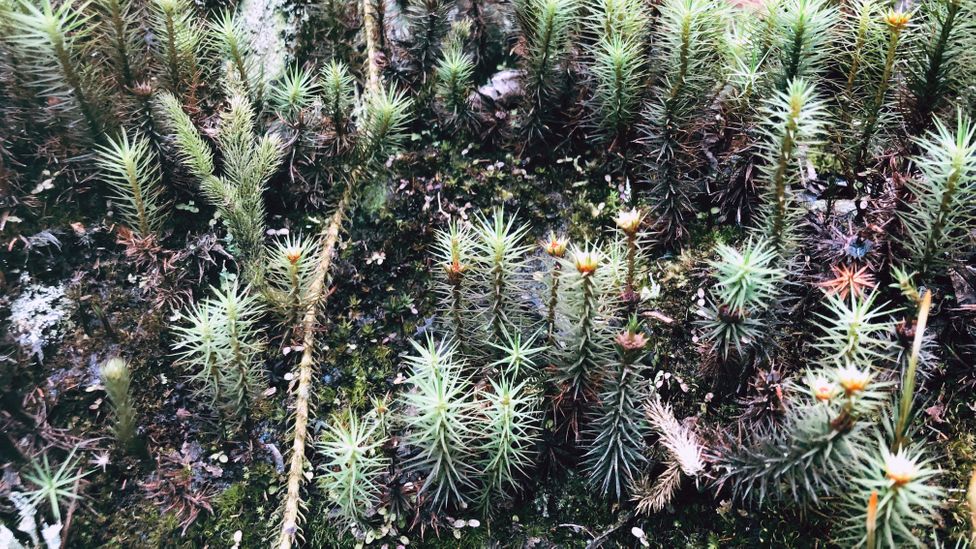
The national park is home to species of plants and animals not found anywhere else in the world (Credit: Bobby Kolade)
Without income from tourists, and with the cost of food rising because of the pandemic, many local communities have little choice but to hunt bushmeat, a practice that was banned when the Rwenzori Mountains were designated a national park in 1991. In recent months, a five-day anti-poaching patrol has regularly carried back hundreds of snares and traps with them.
The formation of the national park aggrieved many local communities, which forbade their customary use of the mountains. But in the face of growing populations in surrounding towns and villages, and the disrupted ecological balance during two decades of war, local hunting practices were deemed unsustainable.
Hunwick believes that tourism, and the employment it provides, can offer an alternative livelihood that also allows wildlife to flourish. “It’s very important that the community lives in harmony with the national parks,” agreed Kule. “In the last 20 years, I’ve seen lots of wildlife coming back: duikers, blue monkeys, lots of bird species.”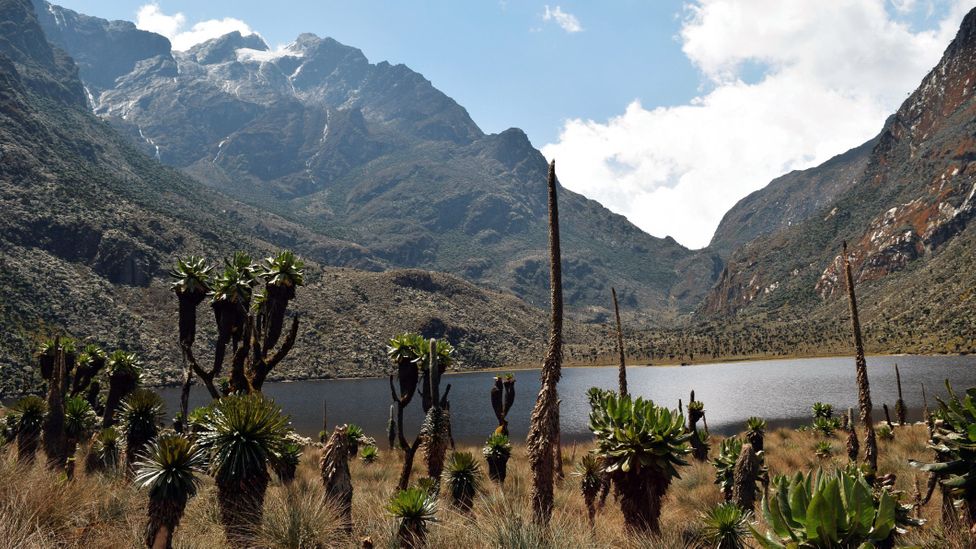
The region’s glaciers, waterfalls and lakes make it one of Africa’s most beautiful alpine areas (Credit Martin Mwaura/Getty Images)
Bypassing the unfinished stretch of trail, we followed the river along a string of waterfalls that flowed over smooth granite boulders into iridescent pools. We stopped nearby to eat lunch in a wooden shelter that was still being constructed around us, looking out over one especially beautiful cascade that plunged more than 50m. Even now the force of the Nyamwamba River demands respect.
People may have heard about Uganda’s safari parks, but this is Africa’s botanical Big Game
“When the floods came it was torture,” said Kule. “But much as we’ve been affected by the floods, we’ve also been making new discoveries, like the series of waterfalls along this valley.”
“It’s an absolute hidden gem,” agreed Hunwick. “We’ve been able to develop and realise more of the potential of the Rwenzori Mountains.”
“In every disaster, there’s always an opportunity.”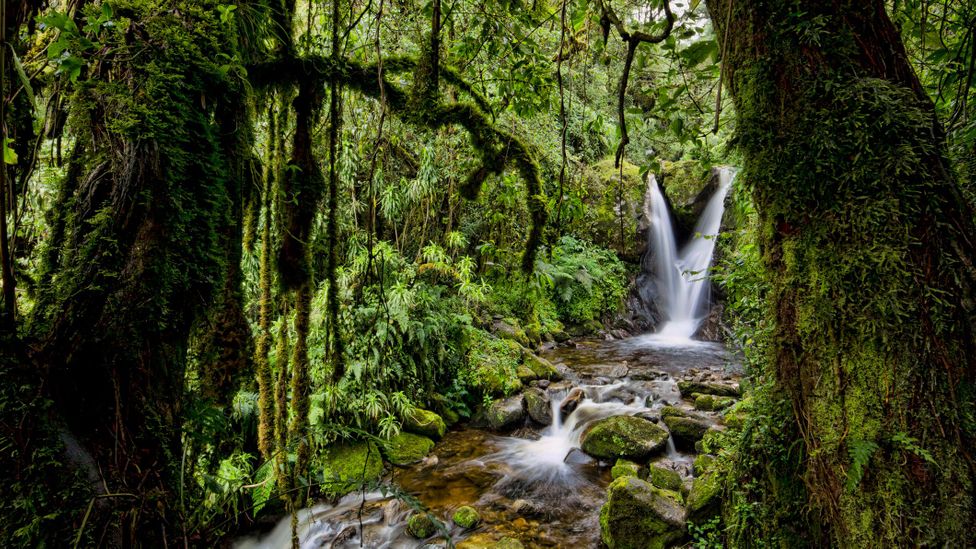
Locals hope that the revitalized trails and camps will entice tourists to return to the region (Credit: Morgan Trimble/Getty Images).
For more details visit:
All Categories
Recent Posts
Kidepo Valley National Park
The Kabaka’s lake
What is the African elephant?
Tags
Quick booking process
+256 393254072

